Preparing for Fall Growth: Why PE Firms Need Leadership Overhauls Now
By Jim McAuliffe, JK Executive Strategies
As we move deeper into the second half of 2025, private equity firms are approaching a critical inflection point across their portfolios. Capital is tighter. Hold periods are stretching longer. Operational complexity is rising. In this environment, “good enough” leadership no longer delivers the returns firms are targeting.
If Q4 is when performance matters most, fall is when leadership decisions must be made.
The Execution Gap: Why Leadership Can’t Wait
Execution risk has become the defining challenge of today’s PE landscape and most of that risk stems from leadership misalignment. Many portfolio companies were structured for a different era. One with lower rates, easier credit, and simpler go-to-market dynamics. That era is gone.
Leadership teams now need to be sharper, more operationally savvy, and built to handle complexity as a constant, not a surprise. Delaying leadership conversations until 2026 planning begins is a strategic misstep. Now is the time to assess, evolve, and act.
Outdated Traits Are Holding PortCos Back
Too often, leadership teams rely on outdated mindsets: founder loyalty, tenure, consensus-building over clarity. But, what drove early success often becomes a liability during scale. In today’s market, leaders must embrace accountability, make fast decisions with limited data, and be willing to challenge the status quo.
Strategic discipline, agility, and data-driven decision-making aren’t nice-to-haves anymore. They’re baseline requirements.
Talent Strategy Is Now a Top Priority
Nearly half of PE firms report that talent strategy has become a board-level issue. Why? Because too many value creation plans stall due to leadership issues, not market headwinds. The best investment thesis means nothing without executional horsepower to back it up.
We’ve reached a point where ignoring leadership gaps is more expensive than addressing them. The most sophisticated firms know this and they’re acting accordingly.
Rethinking Leadership Evaluation in a High-Rate World
Rising interest rates mean every quarter carries more weight. Longer hold periods magnify leadership flaws that a quick exit might have masked. As a result, firms are scrutinizing executive teams not just for vision, but for execution.
Who’s managing cash flow with discipline? Who’s improving margins sustainably? Who’s making operations more resilient quarter over quarter? These are the questions driving leadership decisions now.
What a “Leadership Overhaul” Really Means
A leadership overhaul doesn’t always mean cleaning house. In many cases, it means adding the right talent to complement what’s already working. That could be an operational CFO, a commercially-minded COO, or a strategic CHRO who can professionalize systems without slowing innovation.
Sometimes, the overhaul is about restructuring responsibilities or using interim or fractional executives to plug urgent gaps. The goal is to reengineer leadership capacity to meet today’s operational demands.
The Most Common Blind Spot: Overvaluing Past Success
One of the biggest mistakes we see PE firms make is assuming the leaders who got the company this far are the ones to take it further. Past performance is not future potential. Boards that overestimate loyalty or underestimate the demands of executional excellence end up paying for it later.
Founder Transitions and First-Time CEOs Need Support
Founders bring passion, purpose, and deep institutional knowledge but they often lack the scale-stage sophistication required as the company matures. Similarly, first-time CEOs may have vision but not the operating muscle.
In both cases, support structures are critical. That might mean bringing in seasoned functional leaders, coaches, or advisors who can guide growth while preserving the company’s entrepreneurial spirit.
Fractional Leaders: Fastest Way to Fill Gaps Before Q4
As firms gear up for Q4, interim and fractional leaders offer immediate relief. Whether it’s a fractional CFO to stabilize working capital or an interim CRO to reenergize the sales pipeline, these experts bring results without the onboarding curve.
For firms facing high-stakes performance windows, this isn’t a stopgap—it’s a smart strategy.
What PE Firms Should Do Right Now
If you’re a PE partner heading into fall, now is the time to:
- Initiate leadership assessments across your portfolio
- Map capabilities to strategic priorities for 2026
- Identify executional gaps—and make hard calls before Q4
- Use external advisors for objective assessments when needed
Waiting until annual planning begins is too late. The foundation must be laid now.
Final Thought: Leadership Is Your Strategy
If there’s one message I’d give every PE partner this fall, it’s this:
Don’t confuse survival with scalability.
Just because your leadership team navigated last year doesn’t mean they’re built for what’s ahead.
Talent strategy is value creation strategy. The sooner you confront leadership risk, the more leverage you have to drive growth, performance, and returns. Don’t wait.
JK Executive Strategies helps PE firms build resilient, execution-ready leadership teams across the portfolio. If you’re preparing for Q4 and beyond, we’re here to help.



